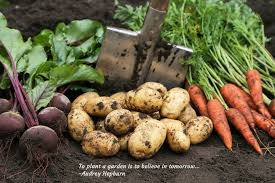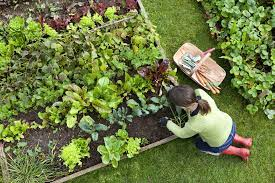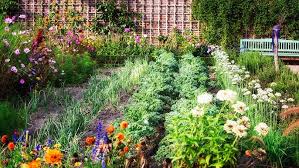Planning a garden for the new growing season presents a great opportunity for a fresh start and to harvest the best produce possible. However, success doesn’t happen by chance. Follow these five golden rules to ensure a flourishing garden and a bountiful harvest.
1. Provide the Right Growing Environment
The foundation of a successful vegetable garden lies in choosing the right location. Most vegetables thrive in full sun, which supports strong growth and resilience against pests and diseases. If full sun isn’t available, opt for crops that tolerate shade, such as leafy greens or certain cool-season vegetables like peas.
Good soil is another key factor. Ensure your soil is fertile, well-draining, and retains moisture. If your soil is less than ideal, enrich it with well-rotted compost, either mixed in or left on the surface between crops.

2. Grow What You Enjoy
This might sound obvious, but it’s essential to grow what you actually like to eat. You’ll be more motivated to care for your crops and ensure they thrive. Focus on fruits and vegetables that align with your tastes and select varieties known for their exceptional flavor and quality.
3. Maximize Your Space
If you’re working with limited space, prioritize vegetables that are hard to find in stores, such as heritage tomatoes or unique-colored carrots. It’s also practical to grow expensive crops, like herbs, fruits, leeks, and pole beans, which can be costly at the market.
Many fruits and vegetables thrive in containers, so even a small terrace or balcony can be transformed into a productive garden. Miniature vegetables, compact salads, and dwarf fruit trees can be grown successfully with proper watering.
To help you maximize space, consider using a garden planner tool. This tool can show you exactly how many plants fit in your space, preventing overcrowding and ensuring optimal yields. You can easily plan and place crops, knowing exactly how many plants each space can accommodate.

4. Make Gardening Easy
Choose vegetables that align with your available time and effort. Some vegetables require more care than others, so opt for easy-to-grow varieties if you have a busy schedule. Perennial herbs, for example, need minimal maintenance once established and can be harvested as needed.
Choosing varieties that are suited to your local growing conditions and resistant to pests and diseases will make gardening easier. Additionally, place your garden close to your home for easy access, and ensure water sources are nearby for regular irrigation.
Paths between garden beds should be wide enough for tools and equipment like wheelbarrows, while the layout of the beds should allow for crop rotation and easy maintenance.

5. Timing is Key
Stagger your harvests to enjoy fresh produce for as long as possible. Quick-growing crops, like radishes, can be sown frequently for a continuous harvest, while prolific plants like pole beans, zucchini, and chard can be harvested regularly to encourage further growth.
Planning ahead and filling gaps between crops ensures your garden remains productive throughout the season. A garden planner tool can help with this, showing you where to plant and when, ensuring your garden space is always used to its full potential.
By following these five simple rules, you’ll be well on your way to a successful garden with better yields. Do you have any garden rules you live by? Share them below!
